 Weird Stuff
Weird Stuff  Weird Stuff
Weird Stuff  Our World
Our World 10 Ways Your Christmas Tree Is More Lit Than You Think
 Movies and TV
Movies and TV The 10 Coolest Stars to Set Sail on The Love Boat
 History
History 10 Things You Didn’t Know About the American National Anthem
 Technology
Technology Top 10 Everyday Tech Buzzwords That Hide a Darker Past
 Humans
Humans 10 Everyday Human Behaviors That Are Actually Survival Instincts
 Animals
Animals 10 Animals That Humiliated and Harmed Historical Leaders
 History
History 10 Most Influential Protests in Modern History
 Creepy
Creepy 10 More Representations of Death from Myth, Legend, and Folktale
 Technology
Technology 10 Scientific Breakthroughs of 2025 That’ll Change Everything
 Weird Stuff
Weird Stuff Ten Bizarre Facts About The Doge Meme
 Our World
Our World 10 Ways Your Christmas Tree Is More Lit Than You Think
 Movies and TV
Movies and TV The 10 Coolest Stars to Set Sail on The Love Boat
Who's Behind Listverse?

Jamie Frater
Head Editor
Jamie founded Listverse due to an insatiable desire to share fascinating, obscure, and bizarre facts. He has been a guest speaker on numerous national radio and television stations and is a five time published author.
More About Us History
History 10 Things You Didn’t Know About the American National Anthem
 Technology
Technology Top 10 Everyday Tech Buzzwords That Hide a Darker Past
 Humans
Humans 10 Everyday Human Behaviors That Are Actually Survival Instincts
 Animals
Animals 10 Animals That Humiliated and Harmed Historical Leaders
 History
History 10 Most Influential Protests in Modern History
 Creepy
Creepy 10 More Representations of Death from Myth, Legend, and Folktale
 Technology
Technology 10 Scientific Breakthroughs of 2025 That’ll Change Everything
Top 10 Fascinating Facts About Plants
In the world of biology, the “plant people” are underrated and often the butt of jokes. Sure, plants aren’t that charismatic when compared to incredible whales, ancient dinosaurs, or creatures the size of a pinky finger that can kill you, but they still rock. (Don’t get me started on rocks.)
There’s often more to plants than meets the eye, and they can be incredibly difficult to study, sometimes even more so than animals. I hope this list inspires each person reading it to see the magic of plants.
10 CAM And C4 Plants
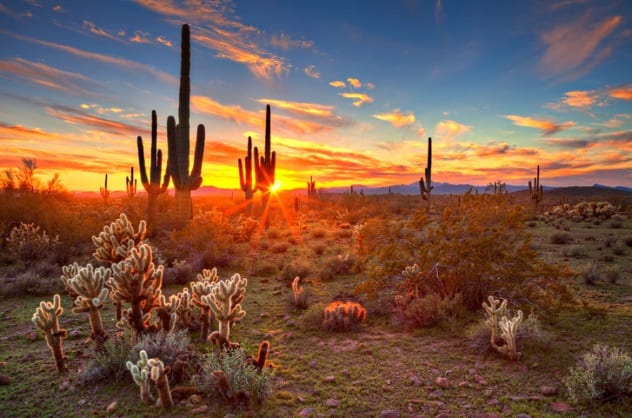
CAM and C4 plants include succulents and cacti as well as other desert plants. CAM stands for “crassulacean acid metabolism,” while “C4” refers to the four carbons used in their metabolic processes. These plants must operate differently than others because they live in such hot, arid habitats and must go to extreme lengths to preserve water stores. Most plants open their pores, or stomata, during the day, which allows carbon dioxide to enter and begin the process of photosynthesis to make sugars to be used as energy. But CAMs and C4s are not “most plants.”
CAMs and C4s must keep their stomata closed during the day so that they don’t lose water. However, this causes absorbed carbon dioxide to bind to the wrong protein, which will consume sugar rather than create it. This problem is caused photorespiration, and these clever greens combat it by leaving their stomata open at night and allowing carbon dioxide to bind to a different protein. This protein is called phosphoenolpyruvate, or PEP for short. This allows CO2 to bind efficiently to form the four-carbon compound oxaloacetate, or OAA. Using this system, desert plants are able to collect carbon dioxide at night and use it to metabolize during the day.[1]
9 Phloem And Xylem
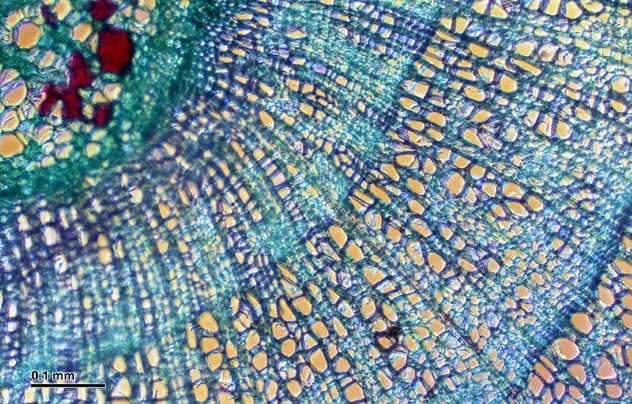
“Phloem” and “xylem” are fancy words that are really just the names of the cells responsible for distributing nutrients in vascular plants. They’re also the reason that vascular plants can grow so much bigger than nonvascular plants. Xylem is responsible for transporting liquid from the roots deep in the ground all the way up to the leaves at the tip of the plant. They are stiff, rigid cells that make up wood and allow the plants to grow tall without wilting or drooping.
Phloem is responsible for transporting other nutrients, or “food,” in the same way, although it isn’t as rigid and structured as xylem. In order to transport, the xylem and phloem form tubelike structures up the stem, with xylem in the center surrounded by phloem. Accompanying cells allow the water or sugars to be passed from cell to cell as needed through small openings.[2]
8 Tropical Pitcher Plant
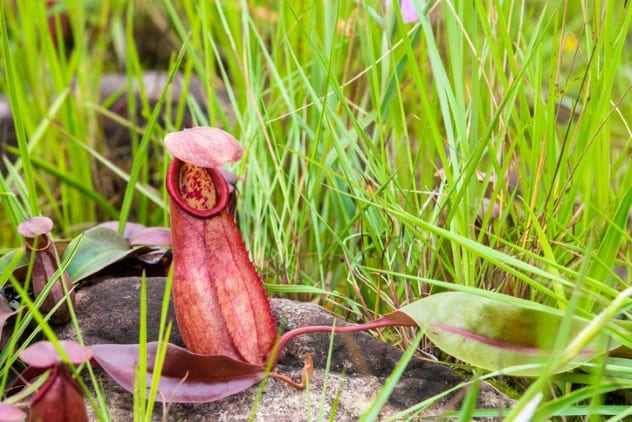
The carnivorous tropical pitcher plant is less known than its infamous relative, the Venus flytrap. Its flowers are a pitcher shape, coated on the inside with extremely slippery wax walls and sweet-smelling nectar at the bottom, all topped off by a lid. There are two different variations of the pitcher plant: the highland and the lowland. They both occur in the tropics in places with constantly humid air. The highland species is much more common and has a more tubelike shape compared to the lowland version, which has a wider, more typical flower shape at the top of its pitcher.
The pitcher plant is best-known for capturing small insects and bugs, which smell the nectar and unwittingly climb in looking for a sweet treat. However, the liquid at the bottom contains digestive proteins which will immediately get to work, while the trapped animal tries tirelessly to crawl up the slimy walls. Although it is common to find small insects or bugs in these traps, tropical pitchers are the only plants known to have devoured entire rats![3] They can grow to a large enough size that even animals as large and clever as rats have become prey.
7 Gravitropism
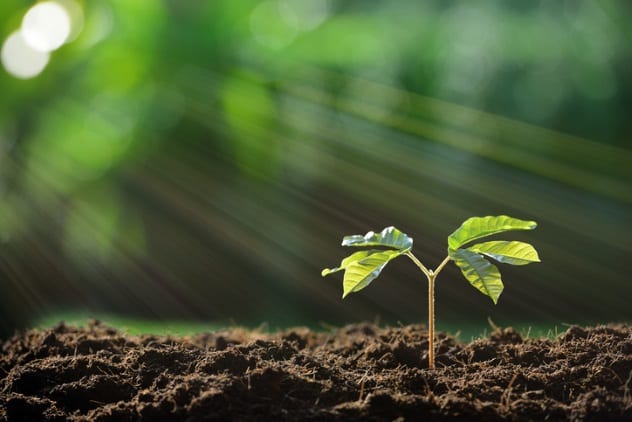
Gravitropism is the special superpower that plants have: the ability to defy gravity. Generally, plants grow upward toward sunlight to maximize photosynthesis. However, if they’re in a position with a narrow range of light, they will grow any direction, even upside down, just to reach it. Plants can change their growth direction in as little as a few hours if sunlight is cut down. How are they able to do this so quickly? They have an extremely sophisticated means of sensing direction and gravity.
The top of the plant, called the meristem, contains cells called statocytes that are sensitive to gravity, allowing the plant to know which direction it is facing. When these cells move to find light, the plant will change the direction of growth. There have been numerous examples that back up this finding, including the fact that plants with the meristem cut off do not have this ability.[4] The system proves just how advanced plant evolution really is. Who needs eyes, anyway?
6 Accessory Pigments
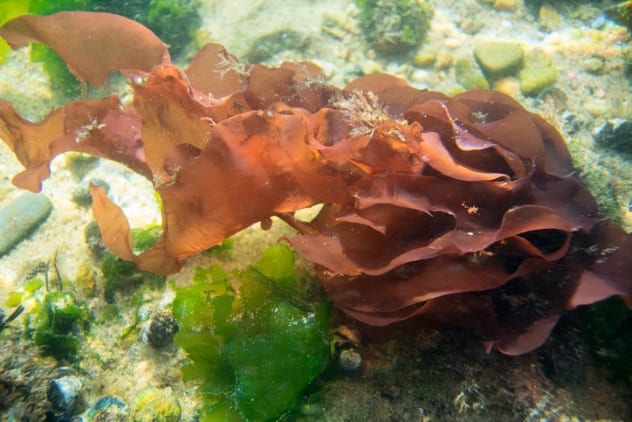
Most of us know that the green pigment in plants is called chlorophyll, which is essential for photosynthesis. However, even though many plants are green, they do come in other colors and can have different pigments despite being green. Plants have what are called accessory pigments, which are optimized for different wavelengths of light to maximize absorption. The wider range of wavelengths a plant can absorb, the more sugars it will ultimately be able to produce. There are pigments to absorb almost any color. For example, consider the different types of algae:
There are three main types of algae: cyanobacteria (blue-green algae), rhodophytes (red algae), and ocrophytes (brown algae). In the ocean, light attenuates very quickly, making photosynthesis more of a challenge. For this reason, accessory pigments are vital to survival, and algae have evolved to use different colors depending on what depth they live at. Red light penetrates only the shallowest waters, so red algae often lives near the surface, whereas blue light penetrates the deepest, allowing blue-green algae to inhabit deeper waters. Even though absorbing red light may be less efficient in a blue ocean, the different color means that red algae doesn’t have to compete with the ever-present blue-green algae.[5]
5 The Most Abundant Protein In The World
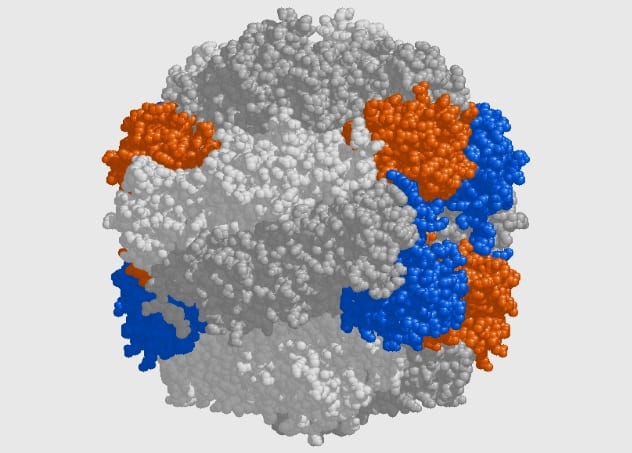
Plants have the privilege of boasting what many believe is the world’s most abundant protein. Ribulose-1,5-bisphosphate carboxylase oxygenase, aka “RuBisCo,” plays an important role in photosynthesis. You can imagine why it’s so abundant, as there are so many species of photosynthetic organisms in every corner of the Earth. During photosynthesis, RuBisCO binds to absorbed carbon dioxide and converts it from inorganic to organic in one simple step. RuBisCO is, so far, the only enzyme on Earth with this capability. When CO2 binds to RuBisCO during photosynthesis, it is broken down into an unstable six-carbon molecule, which will quickly break down into two 3-phosphoglycerate (3-PGA) molecules, which can then be used to create sugar.
RuBisCO can be dangerous for CAM and C4 plants, which must deactivate it, because it becomes too productive, causing them to lose water. However, for most plants, RuBisCO is extremely active during the day to maximize the amount of energy the plant can get. It is so efficient that it can metabolize four carbon dioxide molecules for every oxygen molecule. This is especially impressive when you consider the fact that there are five times more O2 molecules in Earth’s atmosphere than CO2.[6]
4 Zooxanthellae
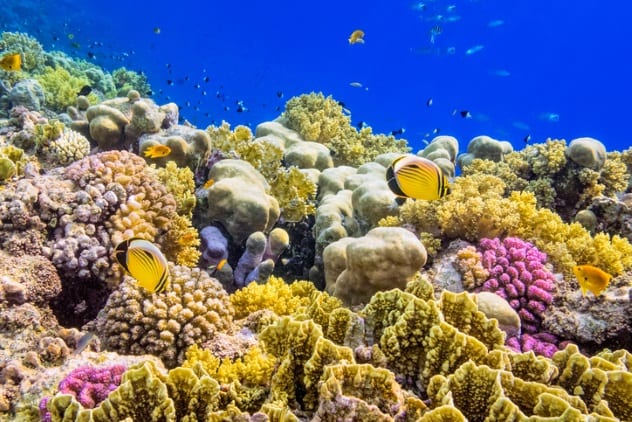
Strange word, right? Zooxanthellae is the name of a photosynthetic algae which resides inside coral reefs. Corals and their zooxanthellae have a mutualistic, symbiotic relationship, in which the coral provides a place for the zooxanthellae to live. The coral itself benefits from the nutrients that the little cells produce through photosynthesis. Zooxanthellae provide oxygen, sugar, and amino acids to the coral and use up harmful waste in their metabolic processes, allowing the coral to produce fats and proteins to survive. The world’s most beautiful oceans, where the most spectacular corals live, are some of the least productive waters. As a rule of thumb, the clearer the water is, the less productive it is because there are very few algae and bacteria in the water to promote growth. These creatures turn water a murkier color.
Zooxanthellae and corals help each other survive in these crystal-clear but nutrient-deprived waters by using a strict nutrient cycle. The clear water becomes a benefit for the algae, too, as it makes it easier for them to absorb light. The problem facing this highly evolved process is coral bleaching. When water quality shifts due to pollutants or acidification, corals become stressed and expel their photosynthetic friends. The coral loses color as a result, gaining a “bleached” look. Once this happens, it is very unlikely that either the coral or algae will survive. Bleached reefs look very unhealthy, causing larger species, like fish, to move to new, healthier areas, leaving the once-thriving reef ecosystem behind.[7]
3 True Plants
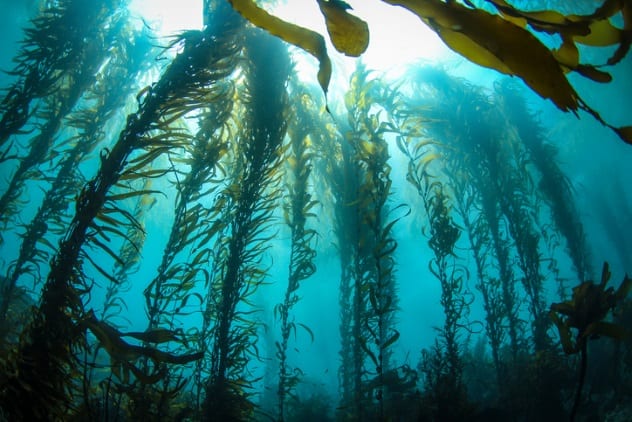
Earlier, this list about plants referenced algae—and lied right to your face. Algae and kelp aren’t actually “true plants.” While they are often referred to as plants, they really fall under their own scientific branch. True, they are far closer to plants than to animals, but they have distinct characteristics which biologists deem too different to be considered honest plants. These differences are mostly morphological. Their photosynthetic abilities are what gets them constantly lumped in under the plant category.
What is it that makes them so different? The most important difference is that they do not have true roots, stems, or leaves. Giant kelp certainly appears to have these things, but the structures in question are actually quite different. Rather than roots, kelp has a holdfast, which has strong binding abilities to hold the organism onto rocky substrates and not get pushed away by strong waves or currents. Kelp “leaves” are called blades and differ from regular plant leaves because they are self-sustaining. Every cell in a blade of kelp can provide its own nutrients, allowing it to survive with no vascular system in place. The stipe, as opposed to a true stem, has no vascular qualities. There is no phloem or xylem to distribute water and nutrients. The stipe is just there for support, allowing the blades to reach up and gather sunlight near the surface of the water.[8]
2 Reducing Water Loss
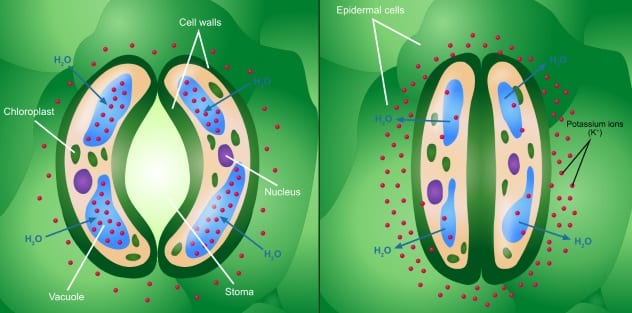
We’ve already talked about the special adaptations of CAM and C4 plants to conserve water and energy, but they’re not the only ones faced with this issue. Every single plant must have some type of mechanism to conserve water to survive. Common adaptations include waxy leaves, use of their stomata, and guard cells. Guard cells surround the stomata and control when they open and close. When the cells are passive, they are flaccid, and the stoma is closed. When the guard cells become rigid, or “flexed,” the stoma is opened.
Guard cells use a process similar to diffusion, in that their opening is triggered when there is a higher concentration of potassium ions inside the cell. When this occurs, the guard cell wants to let in water. Once the cell takes in more water, the ion concentration will even out, and the cell will become limp, causing the stoma to close. When the stomata are open, carbon dioxide is also taken in, allowing for photosynthesis. The processes work in tandem, and when the stomata close at night, the plant is able to use the water and energy it has accumulated throughout the day.[9]
1 Ethylene
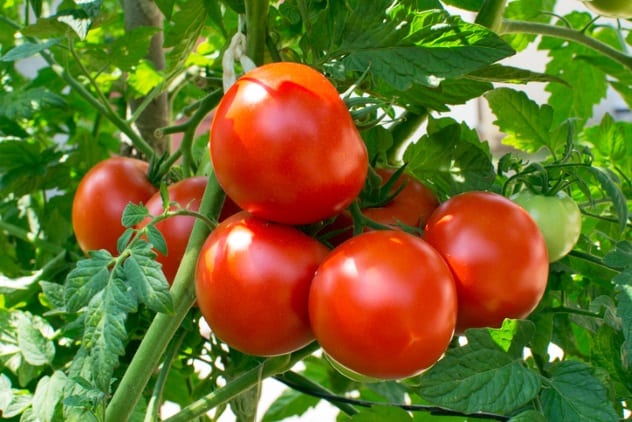
Ethylene is a gas that is given off by fruits which triggers ripening. While humans cannot see or smell this inconspicuous gas, it plays a huge role in the food we eat. Fruits such as pears or apples emit ethylene, while smaller fruits such as berries will not because they generally do not really need to “ripen” in the same way as an apple. The gas is thought to be linked to aging, which is why it triggers ripening. Once one fruit starts to release ethylene, it becomes contagious and will trigger the surrounding fruits to start producing the gas. For this reason, it is wise to keep household fruits together, as it will allow them to ripen faster.
Ethylene has been industrialized and used to help farmers create more crops. It is used largely on tomatoes to help them age and ripen. However, too much will cause the fruits to age too much and become rotten and can also damage the plant, causing it to yellow or lose leaves and flowers. While too much ethylene can be bad for crops, it is nevertheless an amazing adaptation that naturally occurs in plants all over the world to help produce ripe and delicious fruit.[10]
If you need a biologist, I am available. Check out my other lists on Listverse for more cool bio knowledge!








